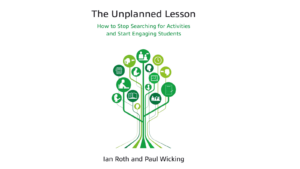(taken from Chimamanda Adichie’s TED talk)
By Suriati Abas,
Intended for university students
Synopsis of Adichie’s story:
In this TED talk, a Nigerian author, Chimamanda Adichie, warns against listening to only one side of a story as it leads to misconceptions about a particular people or nation. She illustrates this with her personal stories about coming to the United States as a professor and an administrator’s daughter and meeting her college roommate.
Adichie mentions her single story of Fide, the houseboy who was working for her family and how her visit to Fide’s village home changes the opinion that she had on his family. In another instance, Adichie found herself on the receiving end of the single-story problem.
Her American roommate had what she called a “default position” toward her as a native Nigerian and African; she was surprised at Adichie’s fluency in English and that she listened to Mariah Carey’s songs instead of tribal music. Adichie concluded by advocating for the value of multiple stories to avoid stereotypical judgments, misinterpreting people and their backgrounds. (Click on “transcript” at the Ted talk site for details).
Suggested activity
Objective:
- To develop awareness on the dangers of stereotyping.
- To identify the rhetorical elements used by Adichie in her TED talk.
Procedure:
- Instruct students to do a three-minute quick write activity, listing the merits of a single story. Tell them that they will revisit their initial thoughts at the end of the lesson.
- Get students to view Chimamanda Ngozi Adichie’s TED talk on “The Danger of a Single Story”. Turn on the English subtitle so that students can listen and read silently, where possible.
- Have students note down some examples that most significantly support Adichie’s main argument, using the rhetorical analysis guide (see Appendix)
Working in trios, instruct students to discuss the following:
- What strikes or surprises you about the talk?
- What is/are the goal(s) of Adichie’s TED talk?
- To whom, specifically, is the speaker addressing?
- What surrounds this speech? When and where was it presented?
- How does Adichie establish her own credibility on this topic?
- How does the speaker appeal to our emotions?
- How is/are the argument(s) organized and supported?
- Go through the questions, asking volunteers to participate in sharing their group’s responses.
- To conclude, ask students to review the listings on their quick write activity and how Adichie’s story changes their views. Share it with their group members.
- As a follow-up activity (to be done outside of classroom), instruct students to create a “speaking selfie” by recording their speech on their cell phone in a front-faced direction, similar to how a selfie is taken. The content of the “speaking selfie” should capture the speaker’s experience(s) with a single story.
The single story (between 5 to10 minutes long), can be focused on personal encounters, language, cultural artefacts, current issues of interest or field-specific concepts (for instance, as a sociology major, pre-service teacher, etc.). Students may use the following prompts as guides:
Who am I?
What is my single story?
What is/are the implication(s) of holding this single story as a university student or pre-service teacher?
Why?
How should I negotiate what I know, or in Adichie’s words, “reject the single story” in my lives, to regain “paradise”?
Upload the “speaking selfie” onto Box (http://www.box.com), a free file management system or preferably a collaborative workspace provided by the university (if any) for others to view and comment on the rhetorical elements used, before the next lesson.
For additional reading, refer to David Brook’s New York Times op-ed article on “The Danger of a Single story”.
Reflection:

Adichie’s TED talk offers opportunities for exploring a range of topics; thinking critically about stereotypical worldviews, issues of identity, feminism and even going into the specifics of rhetorical elements. The suggested activity above is an example of how this freely available online resource can be used to examine rhetorical elements in university classrooms.
If used in a pre-service or in-service teacher education course, the discussion questions could be made more generic perhaps, asking students to identify the assumptions and stereotypes that Adichie encounters, thinking of how media influence the “stories” that we hear, and discussing possible ways of getting at the “balance of stories that Adichie desires to achieve, within a classroom context.
Through “speaking selfie”, students leverage on the affordances of mobile technology not only to articulate their views, but also, have the facility to listen and replay their own single story, and those that were shared by their friends. In sum, the “single story” activity raises awareness on the importance of eliminating biases and predefined assumptions on particular issues, people or cultures, so as to create a safe space for everyone.
References
- Adichie, C. (2009). The danger of a single story. TED talk. Retrieved from
https://www.ted.com/talks/chimamanda_adichie_the_danger_of_a_single_story/transcript?language=en&utm_campaign=tedspread&utm_medium=referral&utm_source=tedcomshare - Brook, D. (April 19, 2016). The danger of a single story. The New York Times.
Retrieved from https://www.nytimes.com/2016/04/19/opinion/the-danger-of-a-single-story.html




